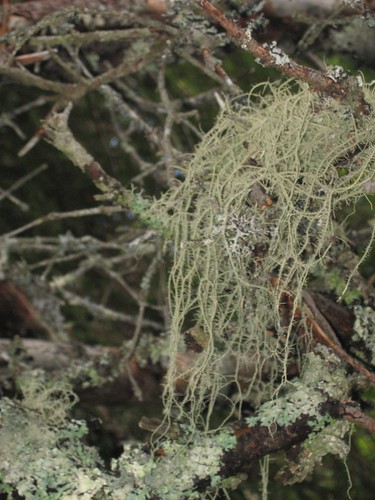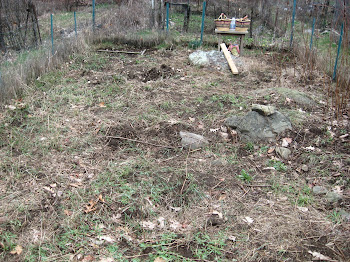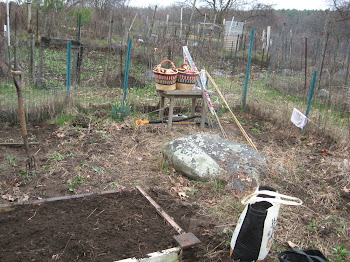Acadia is incredible for its sheer number of lichen species growing on various substrates. I won't go on at length here about them, but suffice to say I've come to appreciate and be amazed by these fungi-alga (or -cyanobacteria) symbiotic relationships. They're amazing.
The large stringy type front and center in the photo is of the Usnea type (Usnea filipendula?); so named for its production of (antibacterial) usnic acid. Also, historically there has been a folk remedy associated with this particular lichen - that is, that wounds should be staunched using this particular lichen. While the morphology is actually very convenient (the long strands with tendrils resemble cotton bandage - and so might function the same way) it turns out usnic acid (which this species produces) has antibacterial properties. Each species produces its own chemical defenses; usnic acid is just one of the many, often unique, chemicals produced by individual lichen species.
Lichens are bioaccumulators - while they are slow-growing and incredibly tolerant of their specific environment (and lichens of one kind or another can be found all over the globe, from Antarctica to the American southwest deserts to Alaska and the Maritimes, rocky shorelines and the foggy Pacific Northwest forests...), they are self-sufficient in that their pairing of fungal and algal (or bacterial) partnership grants them respiration as well as photosynthesis, so they obtain what they need from the atmosphere and go dormant when there isn't enough moisture present - they cannot excrete. Therefore, they're good indicators of the presence of airborne pollutants - some species tolerate certain contaminants quite well, while others will die off when the pollutant ratio climbs past a certain point.
Acadia simply has an incredible array of species, and is the reason I became interested in learning about lichens at all.
For a quick survey and a *far* better array of photos than my own, go here: http://www.lichen.com/portraits.html Their text book, which I used for my class, is incredible.
Wednesday, June 4, 2008
Lichens, several spp.
Subscribe to:
Post Comments (Atom)















No comments:
Post a Comment